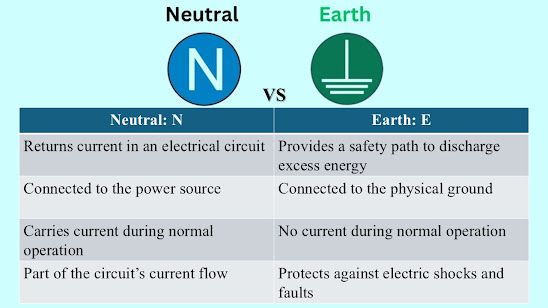Energy losses in power distribution systems represent the significant amount of electrical energy that is dissipated as electricity travels through transmission lines, transformers, and other infrastructure. These losses predominantly occur as heat due to the resistance in conductors, and they can greatly impact both the efficiency and sustainability of power distribution networks. The phenomenon is notable not only for its implications on energy costs but also for its environmental effects, as higher losses necessitate increased energy production, contributing to greenhouse gas emissions and resource depletion. The main types of energy losses include resistance losses (often referred to as I²R losses), core losses in transformers, dielectric losses in insulating materials, and corona losses under high voltage conditions. Resistance losses are particularly critical, as they are proportional to the square of the current flowing through a conductor and the conductor's resistance. These losses account for the majority of energy dissipation in power distribution systems. Additionally, core losses arise from magnetic hysteresis and eddy currents in transformers, while miscellaneous losses encompass smaller contributions from equipment such as switchgear and metering devices. Efforts to mitigate these losses involve various strategies that offer both economic and environmental advantages. Advancements in technology, including smart grids and improved energy storage, along with upgrades to lower-resistance conductors and more efficient transformers, are crucial for optimizing energy flow and minimizing losses. Furthermore, implementing voltage optimization and reconfiguring network designs can significantly enhance the overall performance of power distribution systems. Demand-side management initiatives also play a vital role by promoting energy-efficient practices and reducing peak demand. The debate surrounding energy losses in power distribution systems is often centered on balancing economic viability with environmental stewardship. As the global focus shifts toward sustainable energy practices, the need to address and reduce these losses has become increasingly urgent, driving innovation and investment in more efficient power distribution technologies and practices.
Energy Losses in Power Distribution System
Power distribution losses refer to the energy dissipated during the transportation of electricity through transmission lines, transformers, and distribution infrastructure. These losses primarily manifest as heat due to the resistance encountered by electrical current as it traverses conductors.
Types of Power Distribution Losses
Resistance Losses (I²R Losses)
Resistance losses are the most significant contributor to power distribution losses. These losses stem from the inherent resistance of the conductors, with their magnitude directly proportional to the square of the current flowing through the conductor and its resistance. For instance, in a distribution line with a resistance of 0.5 ohms carrying a current of 100 amperes, the I²R loss can be calculated as follows: Loss = I²R = (100 A)² * 0.5 ohms = 5000 watts or 5 kilowatts
.
Core Losses
Core losses, also known as iron losses, occur within the magnetic cores of transformers and inductive components. They are influenced by factors such as frequency and flux density and include hysteresis losses associated with the magnetization and demagnetization of the core material, as well as eddy current losses induced by circulating currents within the core.
Miscellaneous Losses
These encompass a variety of losses including those occurring in switchgear, metering equipment, and auxiliary systems. Although these losses may be individually small, they collectively contribute to the overall energy losses in the system.
Dielectric Losses
Dielectric losses occur in insulating materials used in cables and other components due to leakage currents and polarization effects. These losses are frequency-dependent and influenced by the properties of the dielectric material.
Corona Losses
Under high voltage conditions, the ionization of air surrounding conductors can lead to corona discharge, resulting in energy loss and audible noise. Factors such as conductor geometry, voltage level, and atmospheric conditions significantly affect corona losses.
Calculation Methods for Power Distribution Losses
Determining power distribution losses requires employing suitable calculation methods tailored to the system's complexity, available data, and desired level of accuracy.
Load Flow Analysis
This technique simulates the steady-state operation of the power system to ascertain the voltage and current distribution across the network. By incorporating resistance and impedance data, load flow analysis facilitates estimating losses in various segments of the system.
Strategies for Loss Reduction
Minimizing power distribution losses has both economic and environmental benefits. Reduced losses lead to cost savings for utilities and consumers while contributing to energy conservation and a lower carbon footprint.
Technological Advancements: The integration of smart grids, distributed generation, and energy storage systems enhances monitoring, control, and optimization.
Conductor Upgrades: Utilizing conductors with lower resistance, such as aluminum conductor steel-reinforced (ACSR) or high-temperature low-sag (HTLS) conductors, effectively diminishes I²R losses.
Voltage Optimization: Maintaining optimal voltage levels through voltage regulators and capacitor banks minimizes losses in the system.
Transformer Efficiency Enhancement: Upgrading to transformers with improved efficiency reduces core-related losses.
Network Reconfiguration: Strategically adjusting the network topology can optimize power flow and minimize current paths, resulting in lower losses.
Demand-Side Management: Encouraging energy-efficient practices and load shifting can reduce peak demand, leading to diminished losses.

.png)
.png)
.png)
.png)










